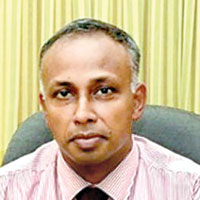News
‘Open schools with all preventive measures in place’
It is time to open the schools as soon as possible, reiterated a senior academic and child specialist this week.
“When the risk-benefit ratio is considered, the benefits of throwing open the gates of schools with all precautions in place far outweigh the risks. Vaccination of children, except those in high-risk categories, should not be a priority when considering the opening of schools,” said Prof. Pujitha Wickramasinghe, Senior Professor in Paediatrics at the Faculty of Medicine, University of Colombo and honorary Consultant Paediatrician at the Lady Ridgeway Hospital (LRH) for Children.
Rational and evidence-based are the views of Prof. Wickramasinghe who focuses on the adverse impacts of not being in the conventional school environment for about 1½ years on children’s physical and mental well-being and their social and cognitive skills and abilities.

Prof. Pujitha Wickramasinghe
He says that most children are in small, confined and crowded spaces in their homes, either glued to a device such as a laptop or mobile phone while following online classes or surfing the net or to the TV. Even if parents attempt to monitor their children’s screen-time, it is difficult to do so. This is due to parents not being as tech-savvy as children and older children possibly giving the excuse about classes or homework and the need to use the internet. The other issue is that online classes, particularly tuition classes, not having a set timetable.
“Children would be sitting throughout the day, with a lack of exercise and would also usually be snacking on unhealthy food which would have repercussions on their health,” says Prof. Wickramsinghe, explaining that if this continues Sri Lanka may see children falling victim to non-communicable diseases (NCDs). Another danger is becoming overweight or obese.
The image gets worse rather than better. The psychosocial dangers of having free access to cyberspace are chilling, he says. Not only do these children become addicted to the internet and video games, but they can also fall prey to stalkers and crooks.
He turns his attention to the major loss of social skills especially among younger children in primary classes. School in itself is a valuable ‘teacher’ on meeting others with diverse personalities, interacting with one’s peers, sharing, not getting one’s way all the time, seeing another’s point of view, etc.
“Education is not just gaining knowledge but also acquiring skills,” stresses Prof. Wickramasinghe, adding that if schools are kept closed Sri Lanka would not only have a generation of bookworms but also a generation unable to look beyond, even to perform such simple acts as buttoning up one’s shirt or tying one’s shoelaces. These children would also miss out on sports and extracurricular activities which are great levellers whatever background one comes from.
He cautions against the opening of the country for work without opening up day-care centres, pre-schools and schools. Then parents would be compelled to go back to work, leaving their children at home, under the care of grandparents or home help, at the mercy of the internet without any supervision.
Moving onto the so-called risks of opening schools, he underscores that children and schools have not contributed to the three COVID-19 waves that have swept the country, neither have children added to the disease burden. Even if children have got COVID-19, except for a handful with severe co-morbidities who succumbed, they would have been asymptomatic. So there is no need to test children because there is also no medication to treat and cure the virus, with only symptoms being dealt with.
Therefore, the stress should be on preventive measures and opening of schools, he adds.
Prof. Wickramasinghe urges that it is important to provide good nourishment to children with well-balanced meals and not junk food and also ensure they have exercise and around eight hours of sleep, ideally from about 10 p.m. to 6 a.m.
“We should vaccinate the children who have co-morbidities such as long-standing renal issues, cancers, neuro-disability disorders, congenital diseases and who are on long-term steroid treatment, etc., while perusing and refining data on the vaccination of other children,” he said.
Prof. Wickramasinghe says that the United Kingdom, Hong Kong and some European countries are recommending a single dose of an mRNA vaccine (Pfizer or Moderna) for children in the age group 12-15 years. There is no need to rush into vaccinating adolescents as they are undergoing changes in their physiology and the COVID-19 disease severity among them is also less.
| Way forward in opening classrooms Prof. Pujitha Wickramasinghe gives the following way forward when opening schools:
Looking at the ability to ensure distancing between children easily, Prof. Wickramasinghe says there are 10,175 schools with the student population being 4.2 million. The breakdown is: v 5,184 schools have fewer than 200 children (total of 470,451students) v 2,660 schools have between 200-500 children (total of 853,728students) v 1,390 schools have between 500-1,000 children (total of 962,494 students) v 642 schools have between 1,000-2,000 children (total of 880,607 students) v 203 schools have between 2,000-3,000 children (total of 490,161 students) v 91 schools have between 3,000-4,000 children (total of 312,290 students) v 50 schools have more than 4,000 children (total of 245,041 students) Meanwhile, another important point he raises is that in 7,940 schools of the 10,175 schools, a meal is provided to nearly 1.1 million children, while nearly 400,000 children in 932 schools are covered by the milk programme. “Sadly, when schools are closed, nearly 1.5 million children are deprived of this valuable nutrition,” laments Prof. Wickramasinghe.
| |

